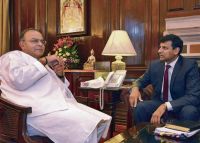
Debate about the bi-monthly monetary policy stance of the RBI, which is to be made on December 2, is heating up. Despite many economists and bankers expressing that the rate cut is not going to happen, there are strong logics for the RBI to cut its policy rate.
The first and the important one is that central banks in most countries have already launched monetary stimulus type policies during the last couple of months. People Bank of China (PCB) made a surprising rate cut last week, joining advanced country central banks like the US Fed, Bank of Japan and the ECB. Now, monetary policy is implemented in a synchronized manner globally and rate cut and growth stimulus made by the emerging market central bank like PCB can’t be unnoticed by the RBI.
Monetary policy is of course viewed as ‘the only game in the town’, and when recession is hitting, it can initiate growth momentum by right-timing policy measures. It is not just an inflation containing policy. Competitive growth stimulus measures by other central bankers should be watched by the RBI in an increasingly interconnected global economy.
The second factor which supports a rate cut is RBI’s inflation target and the present level of inflation. Inflation target for 2015 January is 8% and that for 2016 is 6%. CPI inflation (the index the RBI likes) is on a declining path and is at now 5.5%. It is the lowest after restructuring the index. Most importantly, food inflation is also at its manageable lows.
Future price scenario also indicates a decline in inflation. Crude prices are coming down and may settle at around $ 80 in the medium term. This means that crude prices will not produce inflation in the coming quarters.
Similarly, supply side measures like food supply management of the government also dispels food price shocks.
On the other hand, the demand for a rate cut is strong. GDP growth rate is just 5.3 % and a reversal to high growth phase is to be conditioned by reduced interest rate. Finance Minister Arun Jaitley has indicated the RBI that interest rate cut will bring down the cost of capital and thus reinstate growth momentum.
A rate cut is badly needed for the government rather for the industry. Government finances are in disarray. Borrowing of the government has reached 90 percent of the target when five months are remaining in the fiscal year. Tax revenues are below the target due to slow growth rate. Economic growth is the macroeconomic priority now than any other objective as inflation is under control.
The only factor which may postpone a rate cut is the sense of independence of monetary authority which the RBI prefers to cherish now days. Under pure inflation targeting, the central bank need not look on any other while having a single minded devotion of the inflation target- even if it is economic growth or the mighty Finance Ministry.











